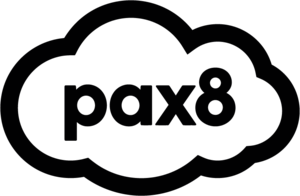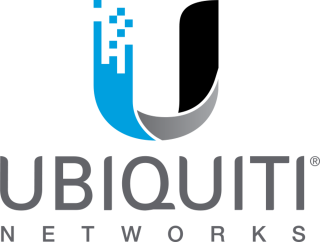In today’s rapidly evolving digital landscape, managing your organization’s cloud infrastructure efficiently is paramount to harnessing its full business value. Here is where FinOps, an emerging practice that blends financial operations with technical expertise to optimize cloud spend, steps in. It’s not merely about cost reduction; it’s about making cost optimization, allocation, and operational efficiency a part of your organization’s culture. Embracing FinOps means you’re at the forefront of transforming how cloud investments are managed, ensuring they drive value rather than drain resources. This strategic approach is crucial for businesses looking to leverage cloud technologies for growth without succumbing to unchecked costs.
This article will guide you through the core of the FinOps approach, illustrating its principles with practical applications. You’ll learn how continuous monitoring and optimization of your cloud spending can lead to substantial cost savings and operational efficiencies. Moreover, we’ll delve into the significant business impact of adopting FinOps, highlighting how rightsizing resources and precise cost allocation can elevate your organization’s financial operations. By the conclusion, you’ll have a comprehensive roadmap to implementing FinOps strategies in your own environment, ensuring your cloud infrastructure not only supports but enhances your business’s strategic goals.
The FinOps Approach
Principles and Philosophy
FinOps combines finance and DevOps, emphasizing the importance of collaborative, cross-disciplinary teams that include IT, finance, and business units. This approach is not merely about cost management but also about enhancing the business value of cloud investments. The principles of FinOps guide organizations to manage and optimize cloud costs effectively. These principles, which should be considered in their entirety and practiced consistently, serve as a north star in guiding the activities of FinOps practices.
Critical to the FinOps methodology is the idea that decisions should be driven by the business value of cloud services. This involves understanding unit economics and making trade-offs among cost, quality, and speed to foster innovation. Moreover, the variable cost model of the cloud is seen as an opportunity to deliver more value, advocating for just-in-time capacity planning and proactive system design.
Key Players Involved
The successful implementation of FinOps requires the involvement of various personas across the organization, each playing a crucial role in the practice. Core personas include FinOps Practitioners, who bridge gaps between business, engineering, and finance teams, and Leadership, which ensures alignment with business objectives and prioritizes FinOps initiatives.
Engineering teams are tasked with designing cost-effective cloud architectures, while Finance professionals handle the budgeting, forecasting, and analysis of cloud costs. Procurement plays a critical role in managing vendor relationships and optimizing cloud service contracts.
Additionally, roles such as IT Security and IT Service Management collaborate to optimize cloud spending and align it with broader organizational goals. These collaborations ensure that cloud spending is not only efficient but also compliant and secure, supporting strategic business objectives effectively.
By embracing these principles and involving key players, organizations can transform their cloud financial management practices, ensuring that cloud investments are both cost-effective and aligned with business needs.
Practical Applications
In the realm of FinOps, practical applications play a pivotal role in enhancing the efficiency and effectiveness of cloud financial management. Here, we delve into the steps necessary to integrate FinOps into your organizational practices and examine the essential tools and techniques that can drive success.
Steps to Integrate FinOps
- Cultivate a Culture of Cost Awareness: Start by fostering an environment where every team member is conscious of cloud costs. Implement mechanisms like showback or chargeback to promote financial accountability across departments.
- Regular Cost Audits and Assessments: Conduct thorough audits to identify underutilized resources and inefficiencies. This regular scrutiny helps in realigning resources and reducing waste.
- Strategic Use of Financial Instruments: Utilize Reserved Instances (RIs) and Savings Plans to capitalize on lower costs available through long-term commitments.
- Continuous Monitoring and Proactive Reporting: Establish a system of continuous financial monitoring with real-time dashboards and alerts to keep track of cloud spending and make informed decisions swiftly.
Essential Tools and Techniques
- Automated Cost Optimization: Leverage tools like Densify to automate tasks such as rightsizing and cost anomaly tracking. Automation not only reduces manual overhead but also ensures optimal resource allocation.
- Resource Utilization Optimization: Use tools to gain insights into resource utilization. This helps in reallocating or terminating resources that are not fully utilized, thus optimizing costs.
- Effective Resource Tagging: Implement a comprehensive tagging strategy that enhances visibility and enables precise tracking of expenses. This aids in accurate budgeting and forecasting.
- Engagement in Provider Negotiations: Build strong relationships with cloud providers to negotiate better terms and pricing, which can lead to significant cost savings.
By integrating these steps and utilizing the right tools and techniques, organizations can significantly enhance their cloud financial management practices, ensuring that every dollar spent is an investment towards the organization’s strategic goals.
Monitoring and Optimization
Tracking Progress
To effectively manage your cloud costs, utilizing the Cost Management console is essential. This tool allows you to set budgets, forecast expenses, and optimize overall cloud costs. A standout feature is the Cost Anomaly Detection, which employs machine learning to monitor usage and costs, identifying spending anomalies. By setting alerts, you are notified when your spending approaches or exceeds your budget thresholds, enabling prompt analysis and resolution of any anomalies to maintain budget control.
Incorporating cost optimization throughout the software development lifecycle (SDLC) is crucial. From planning, where budget justification and cost data guide technical and roadmap decisions, to deployment and operation phases where unexpected spending can be quickly identified and adjusted. Design and build stages benefit from recording data essential for making cost-effective architectural decisions, enhancing the ability to manage planned spending and understand unit costs.
Continuous Improvement
Regular audits and assessments are pivotal in identifying underutilized resources and inefficiencies, allowing for realignment and waste reduction. Employ tools like Densify to automate rightsizing and cost anomaly tracking, which not only reduces manual overhead but ensures optimal resource allocation. Effective resource tagging improves expense tracking and budgeting accuracy, while engaging in provider negotiations can secure better pricing terms, contributing to significant cost savings.
For a proactive approach, integrate cloud cost optimization into your continuous integration and deployment (CI/CD) pipelines. This ensures that infrastructure management is a seamless part of your operations, allowing for immediate adjustments and optimizations. Establishing Cloud Centers of Excellence or FinOps practices within your organization promotes standardized cloud best practices, fostering a culture of cost awareness that is crucial for successful cloud financial management.
By continuously monitoring and improving cloud cost management practices, you ensure that every dollar spent is an investment towards your organization’s strategic goals, enhancing operational efficiency and cost-effectiveness.
Business Impact
Financial Benefits
Embracing FinOps within your organization leads to significant financial benefits. Firstly, you’ll notice a shift towards more predictable budgeting, with a clearer understanding of cloud costs and their drivers. This predictability allows for better financial planning and resource allocation, ensuring that expenditures align with business objectives. Additionally, by implementing FinOps practices like cost transparency and identifying wasteful spending, your organization can achieve substantial cost savings. These savings can then be redirected towards strategic projects that drive further business value.
Operational Performance
The operational performance of your organization is poised to improve with the integration of FinOps. This model promotes a collaborative culture where IT, finance, and business units work together, leading to enhanced decision-making capabilities. With the ability to make informed decisions quickly, your organization can adapt more swiftly to market changes and opportunities. Moreover, the continuous optimization of cloud resources ensures that they are not only cost-effective but also aligned with the required performance and availability standards. This strategic alignment helps in right-sizing resources and optimizing their utilization, which is crucial for maintaining operational efficiency and supporting growth.
Conclusion
As we have navigated through the intricate pathways of implementing FinOps within organizations, the key takeaway remains that the integration of financial operations with technical insights offers unmatched advantages in controlling and optimizing cloud costs. Through the strategic application of FinOps practices, from cultivating a cost-aware culture to engaging in continuous improvement and optimization, businesses can not only achieve substantial cost savings but also enhance their operational performance. This aligns organizational cloud investments with broader strategic goals, ensuring that every dollar spent is a step towards achieving business objectives and fostering growth.
The journey towards effective cloud financial management through FinOps is a continuous one, marked by regular assessments, strategic implementations, and constant adaptations to the evolving digital landscape. Embracing this holistic approach enables organizations to navigate the complexities of cloud spending efficiently, turning potential financial challenges into opportunities for innovation and development. Such practices not only secure immediate financial and operational benefits but also lay the groundwork for sustained success and competitiveness in the digital era, making FinOps an indispensable strategy in the modern business playbook.
FAQs
1. What is the most effective method to optimize cloud costs?
The most effective method to optimize cloud costs is to identify and eliminate unused or underutilized resources. Often, developers may provision temporary compute instances and forget to decommission them, leading to unnecessary costs.
2. How can cloud computing costs be managed effectively?
Effective management of cloud computing costs can be achieved through several key strategies:
- Cost Tracking and Visibility: Ensuring there is clear tracking and visibility of all costs.
- Resource Optimization: Regularly optimizing the use of resources.
- Forecasting and Budgeting: Accurately forecasting usage and budgeting accordingly.
- Cost Allocation: Properly allocating costs to the right departments or projects.
- Policies and Governance: Implementing strict policies and governance to control spending.
- Reserved Capacity: Purchasing reserved capacity to reduce costs.
- Continuous Optimization: Continually seeking ways to optimize costs.
- Cost-Conscious Culture: Fostering a culture that is aware of and aims to minimize cloud costs.
3. What constitutes a cloud FinOps strategy?
A cloud FinOps strategy is built around three main pillars:
- Visibility: This involves obtaining clear and comprehensive insights into cloud usage and expenses.
- Optimization: This includes identifying opportunities to reduce costs.
- Governance: Establishing and maintaining policies and processes to manage cloud spending effectively and ensure accountability.
4. How can billing costs be optimized in the cloud?
There are several ways to optimize cloud billing costs:
- Identify Mismanaged Resources: Locate and manage poorly handled resources.
- Monitor Cost Anomalies: Keep an eye on unusual cost fluctuations.
- Use Autoscaling: Implement autoscaling to adjust resources based on need, reducing costs.
- Utilize Reserved Instances: Opt for reserved instances where feasible to save on costs.
- Adopt Microservices: Consider transitioning to a microservices architecture to enhance efficiency.
- Utilize Heat Maps: Employ heat maps to gain a better understanding of system operations.
- Rightsizing Services: Ensure computing services are appropriately sized to meet needs without excess.
- Evaluate Multi-cloud Options: Consider the benefits and costs of using multiple cloud providers.










